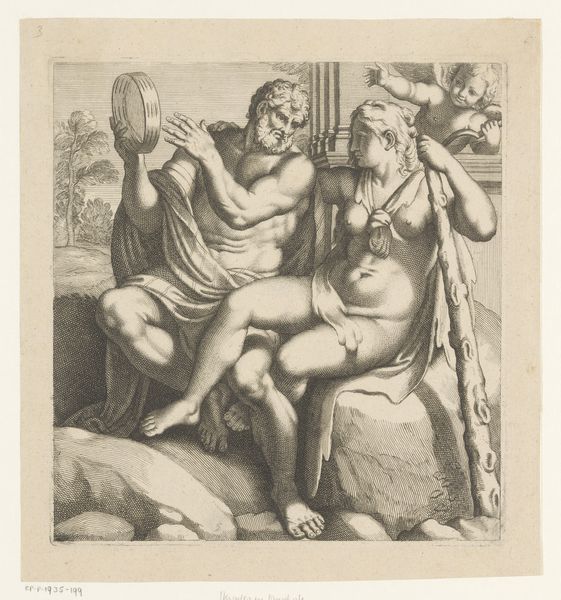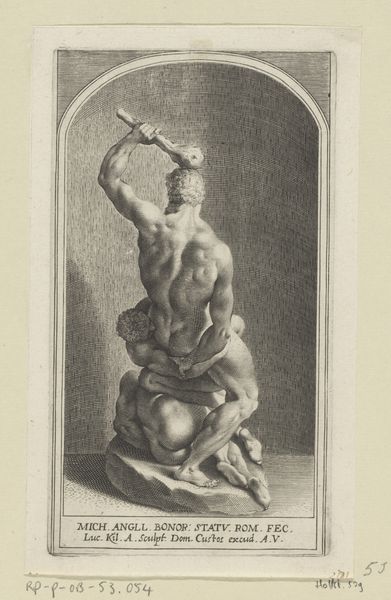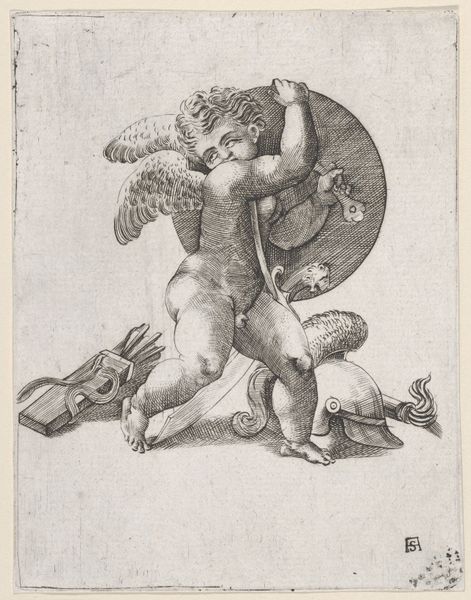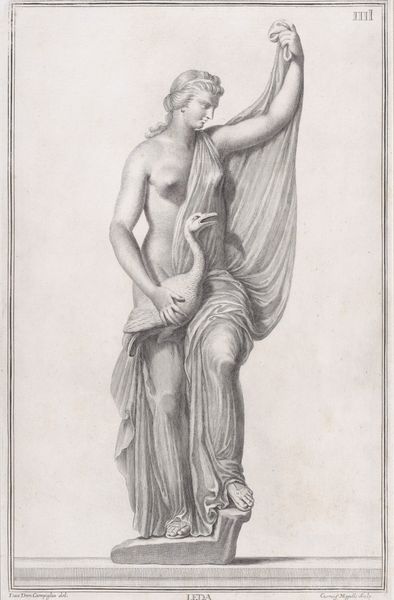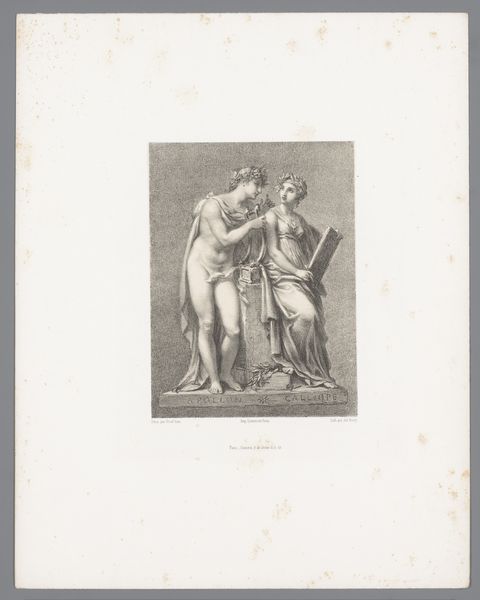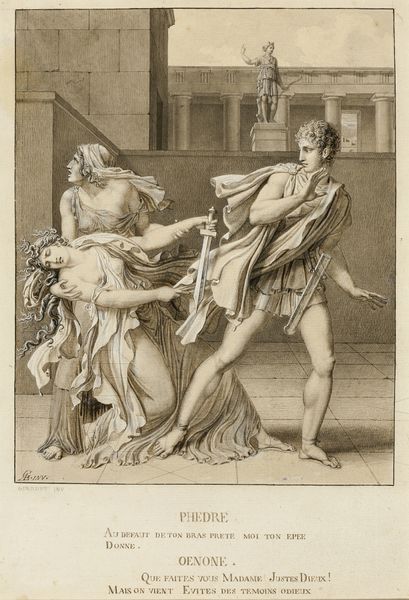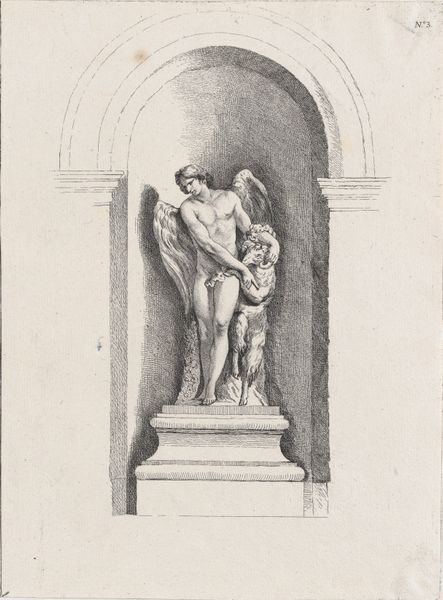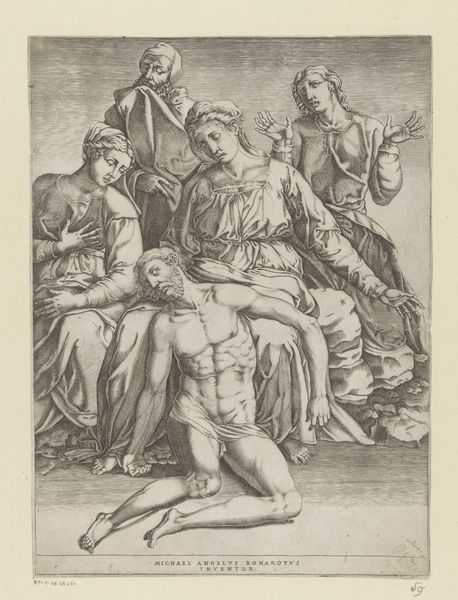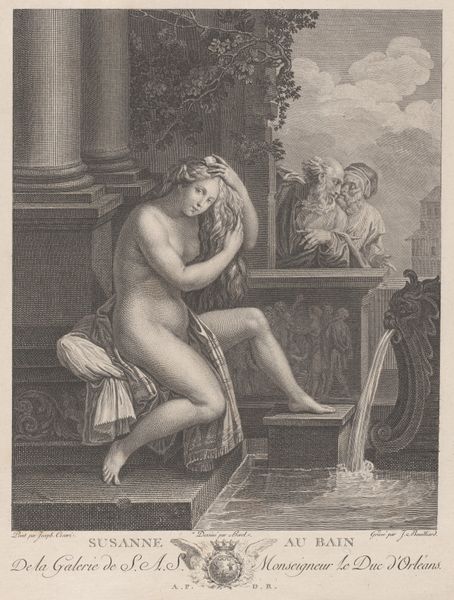
drawing, print, engraving
#
drawing
#
neoclacissism
# print
#
figuration
#
pencil drawing
#
history-painting
#
nude
#
engraving
Dimensions: Image: 5 1/16 × 3 1/4 in. (12.8 × 8.3 cm) Sheet: 6 7/16 × 4 3/16 in. (16.3 × 10.6 cm)
Copyright: Public Domain
Curator: Ah, this piece stops me in my tracks every time. "Polyxena," from 1786, engraved by Vincent Marie Langlois, le Jeune. Editor: The stillness is striking. It feels less like a dramatic scene and more like… well, like a captured, agonizing breath held just before the plunge. Curator: Absolutely. Langlois has masterfully rendered the moment just before the sacrifice. Polyxena, daughter of King Priam, being offered up to appease the ghost of Achilles. The neoclassical precision emphasizes the inevitability, don’t you think? Editor: It’s certainly not shying away from the politics embedded within such mythology. The subjugation of women, the violence exacted for "peace," the romanticizing of death, they're all knotted up right here. The crisp lines almost seem to mock the messy human emotions. Curator: Perhaps. The stark contrast heightens the emotional tension for me. I mean, look at the delicate rendering of Polyxena’s form compared to the brute force implied by the figure about to... well, do what he’s about to do. It is a terrible beauty. Editor: The bare breast of the figure who sacrifices her is particularly unsettling, as this draws us into an explicit consideration of masculinity at play, and more broadly to the gender politics shaping artistic representations of power, sacrifice, and mourning. Is that sculpture behind them a cherubic cupid? As if to sanctify a forced and brutal act? Curator: Interesting point, it almost reads like an irreverent backdrop. Langlois isn’t giving us easy answers or condoning anything. It feels almost… interrogative, don't you think? As if forcing us to face the complexities without offering a neat resolution. Editor: Interrogative, yes, but also a stark reminder that these stories, these power dynamics, continue to resonate, perhaps unconsciously, in how we perceive gender, violence, and the justifications we use to excuse injustice, still today. The myth, laid bare like this, retains its cruel contemporary relevance. Curator: Well, its relevance, like the beauty, remains, doesn’t it? A poignant reminder and warning woven into this single engraved moment. Editor: A haunting meditation for the ages.
Comments
No comments
Be the first to comment and join the conversation on the ultimate creative platform.
